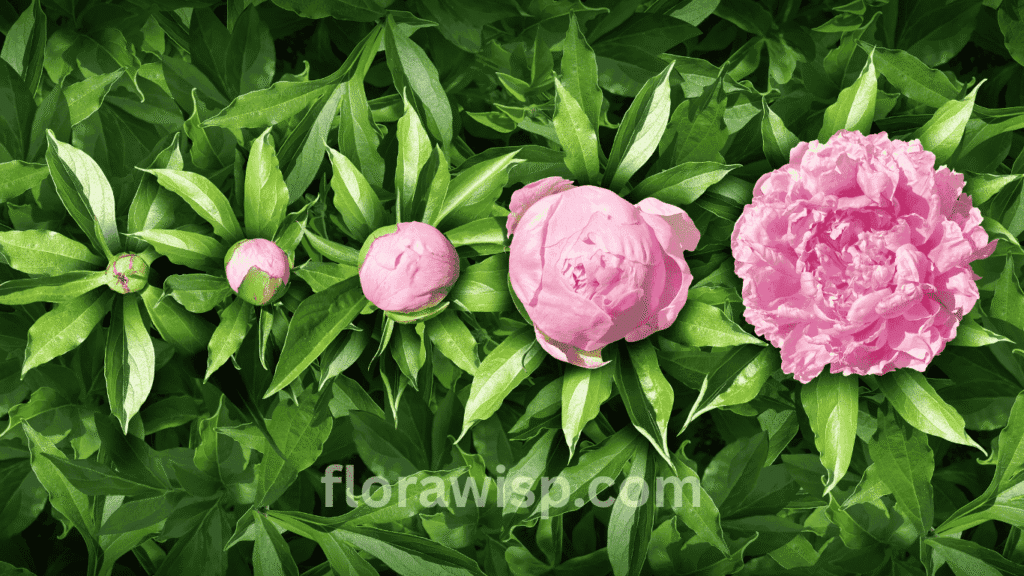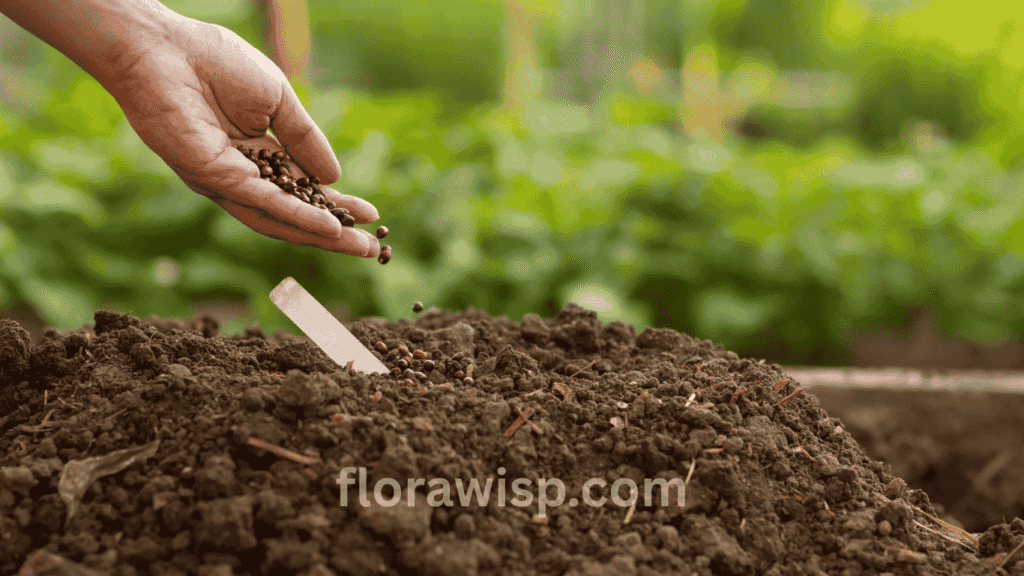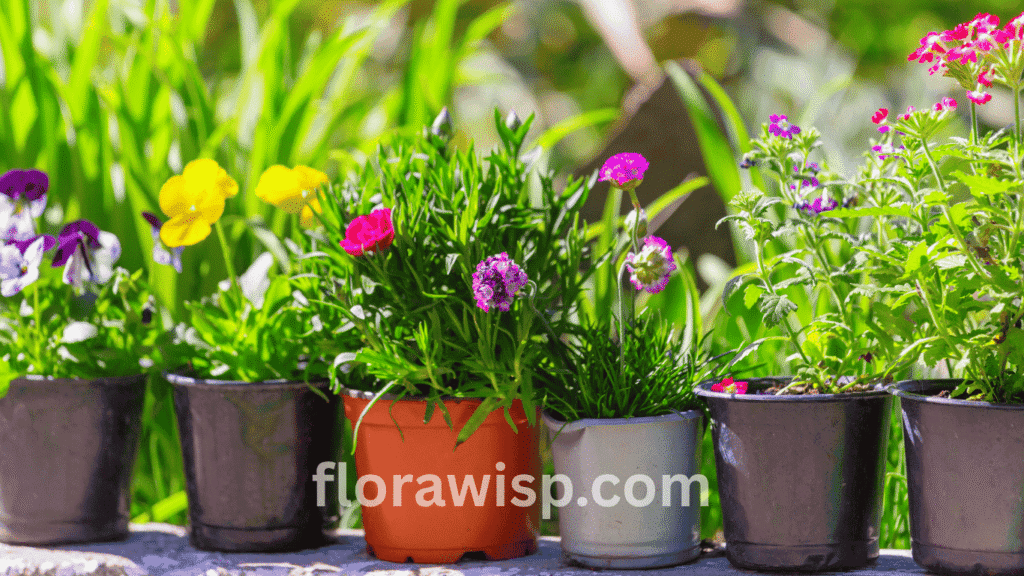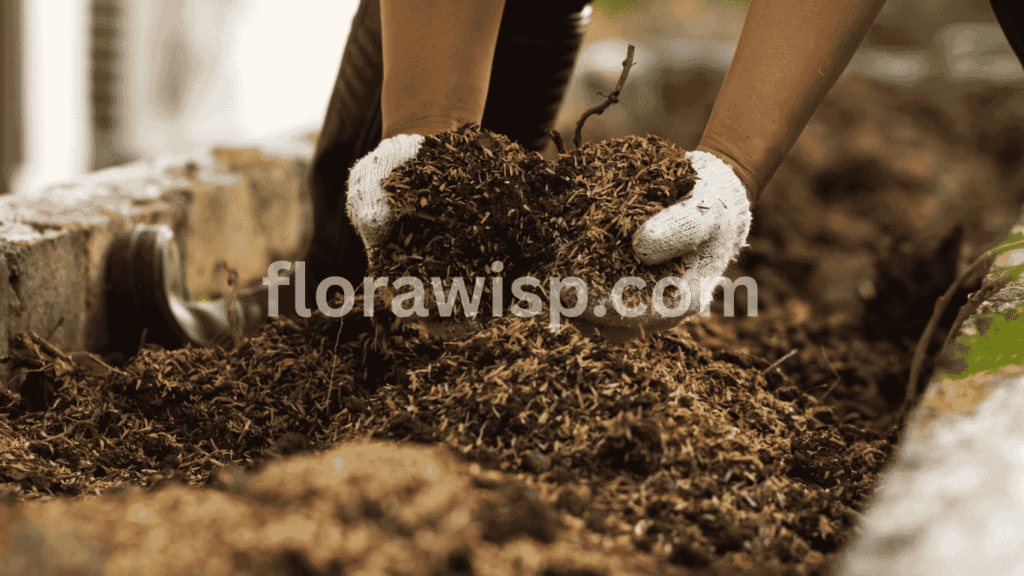Growing peonies is a timeless gardening joy; when planted and cared for correctly, they can flourish for decades, sometimes over 50 years in the same spot. Their lush blooms thrive in full sun (6+ hours daily) and loamy, well-drained soil with a slightly acidic to neutral pH. Plant roots shallow, with the eyes no more than 2 inches below the surface, to ensure reliable flowering.
They prefer cold winters for dormancy, making USDA Zones 3–8 ideal, though some tree peonies adapt to warmer zones with partial afternoon shade. Water deeply but avoid soggy soil, mulch to protect roots, and deadhead spent blooms to boost next year’s display. Popular varieties of Peony Flower include herbaceous, tree, and intersectional hybrids choose the one best suited to your space and climate. If you love elegant blooms, explore our guide to White Peonies for stunning varieties that brighten any garden.
Patience is essential most plants reach full bloom potential by year three but the reward is unmatched beauty season after season. Start with healthy, disease-free roots from reputable suppliers for the best results.
In This Article
Quick Reference Table: Peony Plant Facts
| Common Name | Peony |
| Botanical Name | Paeonia spp. |
| Family | Paeoniaceae |
| Plant Type | Perennial (Herbaceous, Tree, or Intersectional) |
| Mature Size | 2–4 ft tall × 2–3 ft wide |
| Sun Exposure | Full sun (6+ hrs/day); tolerates light dappled shade |
| Soil Type | Loamy, well-drained, rich in organic matter |
| Soil pH | Slightly acidic to neutral (6.5–7.0) |
| Bloom Time | Late spring to early summer |
| Flower Colors | White, pink, red, coral, yellow, and bi-color varieties |
| Hardiness Zones | USDA Zones 3–8 (some tree peonies to Zone 9) |
| Native Area | Asia, Europe, and Western North America |
| Toxicity | Mildly toxic if ingested (roots, seeds, foliage) |
| Average Lifespan | 50+ years in the same location when cared for properly |
| Fragrance | Many varieties are fragrant, adding sensory appeal to gardens |
Understanding Peonies and Their Growth Habits
The Three Main Types of Peonies

Peonies fall into three main categories:
- Herbaceous peonies: These die back completely in winter, returning in spring with fresh stems and foliage.
- Tree peonies: Woody shrubs that retain their structure year-round.
- Intersectional (Itoh) peonies: A hybrid of herbaceous and tree peonies, offering sturdy stems with large, long-lasting blooms.
After years of growing peonies in USDA Zones 5 and 7, I’ve found that each type brings its own unique charm to the garden. Herbaceous varieties bring that classic cottage garden feel, tree peonies stand out as elegant focal points, and Itohs combine the best of both worlds lush flowers on strong stems that rarely flop. If you’re drawn to soft romantic shades, exploring different pink peonies can open up a world of varieties that suit both style and climate.
Growth Stages and Timeline

Peony growing stages are a lesson in patience and reward:
- Year One: Roots focus on establishing themselves; blooms may be sparse.
- Year Two: Plants gain strength; blooms improve in size and number.
- Year Three and Beyond: Full bloom potential emerges; healthy plants can remain productive for decades.
From my own gardens, I’ve had plants blooming beautifully for over the years without needing to be moved, proof that growing peonies is an investment in long-term beauty.
Size and Longevity
Many gardeners ask, “How large do peonies grow?” Mature plants typically reach 2–3 feet tall and wide, though some tree peonies can exceed 4 feet. The best part is that peonies do grow back every year, often living for 50 years or more in the same location. That’s why choosing the right planting spot initially is critical; they prefer to be left undisturbed.
Why Patience Pays Off
One of my earliest peony plantings took nearly four years to hit its stride. Now, each spring, it rewards me with dozens of blooms, some larger than my hand. This is the nature of growing peonies: a little patience yields a lifetime of spectacular flowers.
Best Growing Conditions for Healthy Peonies
🌤 Sunlight Requirements
Peonies thrive in full sun, which means at least six hours of direct light daily. In cooler northern zones, they relish full exposure, while in hotter southern zones, I’ve found morning sun with light afternoon shade helps prevent heat stress.
Soil Preferences
The ideal soil for growing peonies is loamy, well-drained, and rich in organic matter.
- In sandy soils: Incorporate compost or aged manure to help retain moisture.
- In clay soils: Add coarse sand or perlite for better aeration and drainage.
Peonies are not heavy feeders, but they do appreciate fertile ground. I always mix in a slow-release, balanced fertilizer when planting.
Matching Peonies to Your Growing Zone
Knowing your peony growing zone is essential.
- Herbaceous peonies perform best in USDA Zones 3–8.
- Some tree peonies can handle Zone 9 with careful site selection.
“When people ask, ‘Where do peonies grow best?’ My answer is always the same: in places that offer cold winters to trigger dormancy, mild springs for steady bud development, and rich, well-prepared soil that supports healthy root growth. These three conditions work together to give peonies the energy they need to produce those full, long-lasting blooms we all love.
Light Shade Tolerance
While they dislike deep shade, peonies can grow in shade if it’s dappled or partial, especially in southern climates. In my Georgia garden, I’ve had success with peonies in partial shade by ensuring strong air circulation and regular fertilization. The blooms may be fewer but are still striking.
Climate Adaptations
If you’re in a hot climate, plant peonies where they’ll get early sunlight but relief from the harshest afternoon rays. In cooler northern states, give them as much light as possible for maximum flowering power.
Planting Peonies from Roots and Bulbs
When it comes to growing peonies, starting with bare root peonies has always given me the most dependable results. Bare root peonies arrive dormant, often shipped in fall and wake up beautifully in spring when planted correctly.
Selecting the Right Peony Roots

Always look for roots that are firm, plump, and free from mold or damage. A quality peony bare root should have at least 3–5 “eyes” (buds) on it.
These are the points where future stems and blooms will emerge. I prefer to buy peony roots from trusted suppliers who offer wholesale peony roots or bulk peony roots especially when planting large garden borders.
Step-by-Step: How to Plant Peony Roots
From my experience, getting the planting depth right is critical. If you plant too deep, your peonies might take years to bloom.
- Dig the hole about 12–18 inches deep and equally wide.
- Enrich the soil by mixing in compost for organic nutrients and bone meal for strong root development.
- Position the root so the eyes are no more than 2 inches below the soil surface. Planting deeper than this can delay flowering.
- Backfill gently, pressing the soil lightly to remove air pockets.
- Water thoroughly, allowing moisture to reach the entire root system.
- Mulch lightly, just enough to regulate soil temperature but not so much that it smothers the eyes.
Growing Peonies from Bulbs
While many people refer to them as “bulbs,” peonies actually grow from storage roots. The planting process is the same shallow placement, rich soil, and plenty of sunlight. When growing peonies from bulbs, follow the same depth rules to ensure healthy shoots in spring.
Expert Tip: Fall planting gives roots time to settle before winter, setting them up for strong growth and earlier blooms in spring.
Growing Peonies from Seeds and Cuttings
While planting roots offers quick results, starting growing peonies from seed is a lesson in patience. From my own trials, it can take three to five years before you see the first bloom. But the reward knowing you’ve nurtured a plant from its very beginning is unmatched.
How to Grow Peonies from Seed

Peony seeds need a cold stratification period to germinate. This mimics winter’s natural dormancy cycle.
Here’s my method:
- Collect mature seeds from your existing plants once the pods split open.
- Store them in moist sand or peat moss inside a breathable bag.
- Keep them in the refrigerator for about 12 weeks to trigger germination.
- Sow them in a well-draining seed mix, covering lightly with soil.
- Keep the soil evenly moist and be patient, sprouts may take weeks to appear.
This approach is ideal for breeders aiming to develop new varieties or for gardeners who enjoy a long-term project.
How to Grow Peonies from Cuttings
Although less common, growing peonies from cuttings is possible with herbaceous varieties. Choose a healthy, non-flowering stem in early summer. Cut it just below a leaf node, treat the end with rooting hormone, and plant it in a shaded, well-drained medium. Keep the soil lightly moist and avoid direct sunlight until roots form.
Patience Pays Off
Whether you’re starting from seed or cuttings, growing peonies this way requires dedication. The slower timeline is well worth it when your first bloom appears, knowing you’ve guided the plant through every stage of its life.
Tip: Seed-grown peonies may not look exactly like the parent plant, but that unpredictability can lead to surprisingly beautiful results.
Tips for Growing Peonies in Containers
Many gardeners ask me, “Can peonies grow in pots?” The answer is yes, growing peonies in containers is not only possible but also rewarding if you give them the right care. Over the years, I’ve had success with compact and intersectional varieties in containers, especially when space in the garden was limited.
Choosing the Right Container and Variety
For best results, select dwarf herbaceous peonies or intersectional hybrids. These are naturally more compact and adapt better to pot culture. The container should be at least 18–24 inches wide and deep enough to accommodate the roots comfortably. A sturdy, frost-proof pot works best for long-term planting.
Soil and Watering for Container Peonies
When growing peonies in pots, I use a high-quality, free-draining potting mix enriched with compost. Avoid garden soil; it tends to compact in containers, leading to poor drainage. Water regularly but make sure the roots never sit in soggy soil; peonies dislike “wet feet” as it encourages rot.
Sunlight and Seasonal Care
Peonies in containers thrive in full sun, needing at least six hours of direct light daily. Interestingly, I’ve noticed that my peonies in containers often bloom a little earlier than those in the ground thanks to the warmer soil in spring.
Can You Grow Peonies Indoors?

While you can bring peonies indoors for short-term display, long-term indoor growing peonies isn’t practical.
Peonies require a winter chill period to trigger their next season’s blooms, something most indoor environments can’t provide. However, a blooming potted peony can make a stunning temporary centerpiece, especially when arranged as part of a Peony Bouquet, before returning outdoors.
Regional Planting Guides for Peonies
One of the most important lessons I’ve learned about growing peonies is that location matters. Peonies are hardy, but their performance depends heavily on your climate, planting zone, and seasonal conditions.
Growing Peonies in Texas
Can peonies grow in Texas? Yes, but they need the right variety and location. Early-blooming peonies, such as ‘Festiva Maxima’ or intersectionals, perform best. In my Dallas trials, planting where they receive morning sun and afternoon shade helped prevent heat stress. A 3–4 inch mulch layer kept the roots cool, while consistent deep watering encouraged strong blooms despite hot summers.
Growing Peonies in Florida and Zone 9
Do peonies grow in Florida? They can, though it’s a challenge. In Florida and Zone 9, choose heat-tolerant intersectional hybrids. Plant in the coolest microclimates, such as north-facing beds, and ensure afternoon shade. Mulching and steady moisture help counter the heat. Expect a shorter bloom season compared to northern climates.
Growing Peonies in Southern California
Do peonies grow in Southern California? Yes, with proper care. Plant in partial shade to protect blooms from scorching sun and maintain steady irrigation during dry spells. In hotter inland areas, morning sun paired with afternoon shade is the key to preventing wilt.
Growing Peonies in Arizona
Can peonies grow in Arizona? They can, but sun protection is essential. My gardening friends in Phoenix grow peonies under filtered light or shade cloth. Consistent deep watering offsets the dry, hot conditions, allowing healthy root development.
Growing Peonies in Cooler States
Do peonies grow in Colorado and Georgia? Absolutely. Colorado’s cool springs and Georgia’s mild winters are ideal for growing peonies. In these climates, plant in full sun with well-drained soil, allow space for airflow, and expect vibrant, reliable blooms each year.
Seasonal Care for Longer Blooming Peonies
When it comes to growing peonies, a little well-timed attention goes a long way toward extending their bloom season and keeping plants thriving for decades.
Deadheading for Continuous Garden Beauty

Once your blooming peony flowers start to fade, remove spent blooms promptly. This prevents the plant from putting energy into seed production and directs it back into root and stem strength for next year’s display. I’ve seen a noticeable difference in flower count the following season when deadheading is done consistently.
Fertilizing for Strong Blooms
In early spring, feed your peonies with a balanced, slow-release fertilizer. I favor a 10-10-10 formula applied just as shoots emerge. Avoid heavy nitrogen fertilizers, which can encourage excessive leafy growth at the expense of flowers.
Mulching for Year-Round Protection
A 2–3 inch layer of organic mulch helps regulate soil moisture and temperature. In winter, mulch provides insulation for roots, but be sure to keep it a few inches away from the crown to prevent rot.
Long-Term Planting Wisdom
Many gardeners ask, “Are peonies hard to grow?” My answer is no as long as you respect their needs. Plant them in a permanent spot from the start, because peonies dislike frequent transplanting. The healthiest clumps in my garden are over 20 years old, still producing abundant blooms because they’ve remained undisturbed in rich, well-drained soil.
Tip: Consistent care deadheading, balanced feeding, and proper mulching is the real secret behind those magazine-worthy peony borders.
Companion Planting with Peonies
Growing peonies isn’t just about the blooms themselves; thoughtful companion planting can enhance their beauty, protect them from pests, and create a more dynamic garden display.
Tall Companions for Layered Blooms
I often pair peonies with alliums, irises, or delphiniums. These taller blooms complement peonies’ round, lush flowers and extend the garden’s floral season. For example, irises bloom earlier, while delphiniums carry the display into early summer.
Groundcovers for a Finished Look
After peonies finish blooming, their foliage gradually loses its lushness. To keep beds looking full, I plant low-growing catmint or hardy geraniums at the base. These fill in the gaps without competing heavily for nutrients or water.
Pest Deterrence and Plant Health
Some companion plants can help deter common garden pests. Alliums, in particular, are known for repelling aphids, while catmint attracts pollinators that benefit the entire bed.
Tip: Choose companions that thrive in the same growing conditions full sun, well-drained soil, and moderate moisture. This way, all plants flourish together without one outcompeting the other.
Common Peony Problems and How to Fix Them
Even after years of growing peonies, I’ve learned that a little prevention is far easier than curing a problem once it appears. Healthy plants in ideal conditions rarely struggle, but when issues do arise, knowing how to act quickly keeps blooms vibrant year after year.
1. Botrytis Blight: The Most Common Peony Foe

Botrytis blight tends to show up in damp, cool springs, especially when plants don’t have enough air circulation. It appears as brown or black spots on young shoots and buds, sometimes causing entire stems to wilt.
My fix: I make sure each plant has at least 3 feet of spacing for airflow and remove any affected stems immediately. In years with particularly wet springs, I apply a copper-based fungicide as a preventative.
2. Leaf Scorch from Hot Sun
In hotter climates, intense afternoon sun can scorch peony foliage. This is especially true for young plants still establishing.
My fix: In regions with harsh summer heat, I plant where they get morning sun and dappled afternoon shade, a key part of peony preferred growing conditions that keeps foliage healthy all season.
3. Pest Issues: Rare but Worth Noticing
Peonies are generally pest-resistant, but I occasionally see thrips or ants. Thrips can damage buds, while ants are more of a nuisance than a true threat.
My fix: A gentle blast of water or insecticidal soap handles thrips, and I avoid unnecessary ant control since they’re often just after the nectar.
Tip: Healthy soil, proper spacing, and meeting peony preferred growing conditions are the best long-term defense. In my own garden, plants with strong roots and good drainage sail through seasons with barely a blemish.
Where to Source Quality Peony Roots and Plants
Over the years, I’ve learned that growing peonies successfully starts with choosing the best planting material. The difference between a premium root and a bargain one can mean years less waiting for blooms.
Buy from Trusted Specialists
I always recommend buying from growers who specialize in peonies, whether local nurseries or reputable online sellers. Specialist suppliers typically offer healthy, disease-free stock with at least 3–5 strong “eyes” (growth points).
Wholesale and Bulk Options for Larger Plantings
If you’re planning an extensive bed or commercial display, look for wholesale peony roots or bulk peony roots from established suppliers. These often come at a better per-root price while still maintaining high quality.
My Go-To Approach for Success
When I’m ready to expand my peony beds, I purchase from growers with strong reputations in horticultural circles and customer reviews that mention healthy, vigorous plants. I also time my purchases for fall planting the ideal season for growing peonies so roots have the entire winter to establish before spring growth.
Conclusion
Growing peonies is a rewarding investment in beauty and tradition. With the right preparation, care, and patience, your plants can reward you for decades with show-stopping blooms that return stronger each year. I’ve seen peonies planted by my grandmother still flourishing today, a living reminder that with proper care, whether you choose classic pinks or the bold elegance of a red peony, these flowers can become a true family legacy.
FAQs
Q. When do peonies bloom?
Peonies typically bloom in late spring to early summer, depending on variety and region. In my Zone 5 garden, early types open in mid-May, while late ones can last into June. Warmer zones see blooms a few weeks earlier. Choosing varieties with staggered bloom times extends the season.
Q. How long do peonies bloom?
Individual peony blooms last 7–10 days, but with multiple varieties, you can enjoy flowers for up to 6 weeks. In my garden, I plant early, midseason, and late varieties to keep the show going well into summer.
Q. Can peonies grow in shade?
Peonies can tolerate light shade but bloom best in full sun. I’ve grown them in morning sun and afternoon shade in Georgia, with good results, though flower count was slightly reduced.
Q. Can you grow peonies indoors?
Peonies can be grown indoors temporarily for display, but they need a winter chill to bloom reliably year after year. I often force potted peonies into early bloom indoors for special occasions, then move them back outside.
Q. Are peonies hard to grow?
Growing peonies is not hard if planted in the right location with proper care. They prefer stable conditions and dislike frequent relocation. My oldest plants have thrived for over 20 years with minimal fuss.
References
Old Farmer’s Almanac peony planting guide
University of Illinois Extension – Peony care and planting depth
Purdue University – Growing peonies in the garden
Gardener, M.Sc. Horticulture
Elara Bennet is a gardening writer from Austin, TX, passionate about sustainable lawns and blooms. Read full bio →








